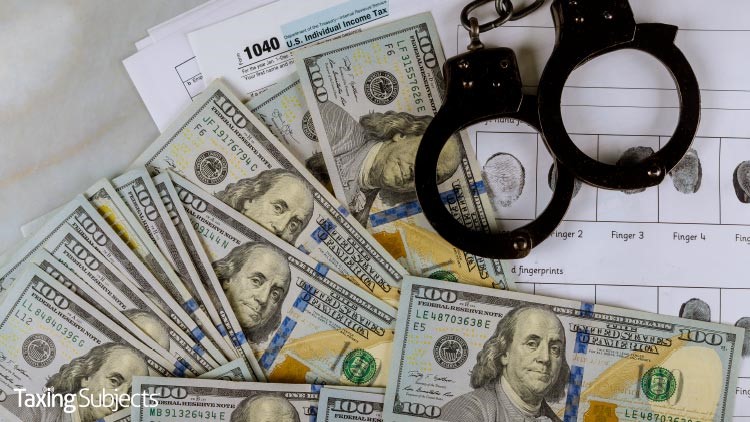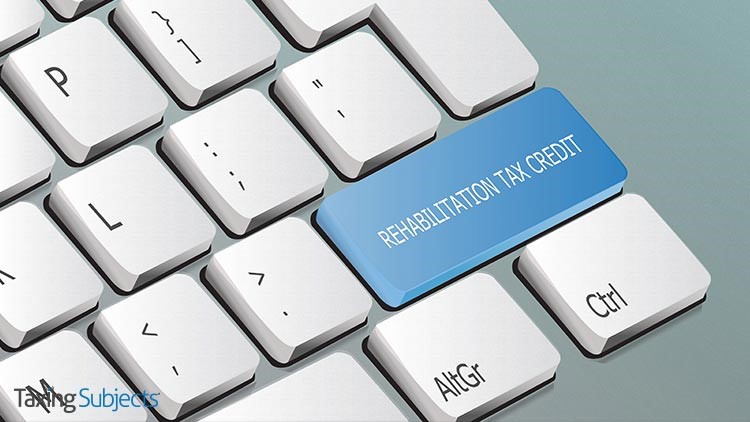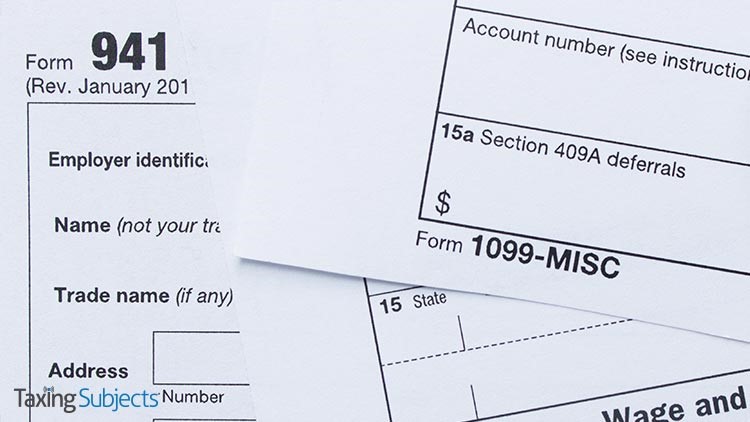by | Aug 4, 2020 | Tax Tips and News
The Internal Revenue Service is changing the guard in its Criminal Investigation (CI) division. James Lee, the current deputy chief of the division and a 25-year IRS veteran, will take the reins from retiring Chief Don Fort.
Fort will step down Sept. 30 after leading CI since 2017. Fort began his IRS career in 1991 as a special agent in CI’s Baltimore District.
IRS Commissioner Chuck Rettig says Lee brings a lot of experience to his new position.
“Jim is highly respected throughout the IRS and will continue long-standing working relationships with the civil enforcement functions of the IRS as well as with the Department of Justice’s Tax Division and tax prosecutors throughout the country. He understands the need to support compliant taxpayers by maintaining a strong, robust enforcement effort focused on those who are compliance challenged,” Retting said.
Wide-Ranging Responsibilities
As Chief of the Criminal Investigation division, Lee will lead enforcement efforts to investigate tax code violations and other related yet diverse financial crimes such as money laundering, public corruption, cybercrimes, identity theft, narcotics and terrorist financing.
Before becoming Deputy Chief, Lee served as Director of Field Operations, Northern Area, overseeing CI enforcement in Boston, New Jersey, New York, Ohio, and Philadelphia field offices. He also previously served as Director of Field Operations, Southern Area and the Director of Strategy.
The new Chief started his IRS career in 1995, when he was special agent in Detroit. He later moved into CI’s leadership ranks, serving in increasingly responsible positions as he ascended the management ladder.
His experience included Supervisory Special Agent in the New Orleans Field Office; Headquarters Senior Analyst in the International and Financial Crimes Sections; Assistant Special Agent in Charge within the Boston Field Office; and Special Agent in Charge of the New Orleans Field Office and later the Chicago Field Office.
Lee has a Bachelor of Business Administration Degree with a concentration in Accounting from Tiffin University in Ohio.
Some Big Shoes to Fill
Commissioner Rettig said Lee will follow a path blazed by his predecessor in the Chief’s office. Fort’s contributions to CI, Rettig noted, will only put Lee in a better position to lead the division from here.
“Don has been a remarkable leader and champion for IRS Criminal Investigation,” Rettig said. “He has a distinguished career and the entire IRS leadership team appreciates everything he has done to uphold the law and support tax administration. We look forward to Don’s remaining time at the IRS as well as Jim taking on a new role and building on the great tradition in CI.”
– Story provided by TaxingSubjects.com
by | Aug 3, 2020 | Tax Tips and News
The Internal Revenue Service has good news for taxpayers restoring historic buildings. Last week, the agency announced that they have granted additional time to qualify for the Rehabilitation Tax Credit to mitigate logistical issues arising from the coronavirus pandemic.
What is the Rehabilitation Tax Credit?
The rehabilitation tax credit lets real estate owners deduct a percentage of the renovation cost from qualifying buildings if the project meets certain qualifying conditions. The IRS says that “projects must satisfy the ‘substantial rehabilitation test’ within a 24- or 60-month period for determining whether the rehabilitation work is sufficient to qualify a building for the rehabilitation credit.” Which timeframe applies is governed by the Tax Cuts and Jobs Act.
“The … [TJCA] generally requires the rehabilitation credit to be claimed over a five-year period for amounts that taxpayers pay or incur for qualified rehabilitation expenditures after December 31, 2017,” the IRS explains in last week’s release. “However, taxpayers may claim the credit all in one year under pre-TCJA rules for projects that qualify under a transition rule.”
While you can and should read more about how the rehabilitation tax credit is met for current and future renovation projects in Notice 2020-56, IRS.gov has a concise breakdown titled “Rehabilitation Tax Credit – Real Estate Tax Tips.” It outlines the TCJA-related changes, when the transition rule applies, and who needs to file Form 3468, Investment Credit.
How much additional time do I have to satisfy the substantial rehabilitation test?
Following the publication of Notice 2020-56, “taxpayers that have a measuring period under the substantial rehabilitation test ending on or after April 1, 2020, and before March 31, 2021, now have until March 31, 2021 to satisfy the test … [which also] applies to the substantial rehabilitation test for claiming the credit or qualifying under the TCJA transition rule.”
Sources: IR-2020-173; IRS Tax Reform Tax Tip 2018-161
– Story provided by TaxingSubjects.com
by | Jul 30, 2020 | Tax Tips and News
Taxpayers can dip into Coronavirus Aid, Relief, and Economic Security Act-specified retirement accounts without suffering a penalty, according to an Internal Revenue Service press release published yesterday. The reminder comes days after the $600 unemployment benefits included in that legislation expired.
How do the retirement account withdrawals work?
“Under the CARES Act, individuals eligible for coronavirus-related relief may be able to withdraw up to $100,000 from IRAs or workplace retirement plans before December 31, 2020, if their plans allow,” the IRS writes. “In addition to IRAs, this relief applies to 401(k) plans, 403(b) plans, profit-sharing plans, and others.”
The IRS outlines four ways the CARES Act makes pulling money from retirement accounts easier for those facing hardships during the pandemic, including penalty-free repayments: “These coronavirus-related withdrawals:
- May be included in taxable income either over a three-year period (one-third each year) or in the year taken, at the individual’s option.
- Are not subject to the 10% additional tax on early distributions that would otherwise apply to most withdrawals before age 59½,
- Are not subject to mandatory tax withholding, and
- May be repaid to an IRA or workplace retirement plan within three years.”
Loans are also available from certain retirement plans until September 22, 2020. The IRS says taxpayers can “borrow as much as $100,000 (up from $50,000) from a workplace retirement plan, if their plan allows.” However, IRAs are not eligible for this loan program.
To qualify for a retirement-plan withdrawal or loan, taxpayers must satisfy one of the following requirements:
- Be diagnosed with COVID-19 by a CDC-approved test
- Have a spouse or dependent diagnosed by an approved test
- Show that COVID-19 has caused financial hardship
Taxpayers who need to satisfy the financial-hardship requirement must show that they or their spouse have lost a job, worked reduced hours, been paid less, had to close a business, or some other similar difficulty due to the coronavirus pandemic. Many American businesses have been forced to close or adopt modified schedules due to local restrictions—restaurants, for example, have been hard hit by stay-at-home orders and limits on social gatherings.
Notice 2020-50 and an FAQ page on IRS.gov include further details about making withdrawals and taking loans from qualifying retirement plans.
Source: IR-2020-172
– Story provided by TaxingSubjects.com
by | Jul 29, 2020 | Tax Tips and News
The Tax Cuts and Jobs Act (TCJA) of 2017 famously adjusted the income tax brackets and lowered the corporate tax rate to 21 percent, but the sweeping legislation contained a host of tax-related changes. The Coronavirus Aid, Relief, and Economic Security (CARES) Act of 2020 made further tweaks—like adjusting the then-new limitation on deducting business interest expenses—that forced the Internal Revenue Service to work on a new set of final regulation.
This week saw the IRS announce the publication of the final regulations for business interest expense deductions. Obviously, the regulations outline how the limitation is applied by the IRS and which types of businesses may not be subject to it.
How is the business interest expense deduction limitation applied?
The final regulations limit business interest expense deductions to an inflation-adjusted gross receipts threshold. The limitation applies to tax years after December 31, 2017, and the threshold for tax year 2020 is $26 million.
The IRS says the gross-receipts threshold is calculated as a sum of the following:
- “the taxpayer’s business interest income;”
- “30 percent (or 50 percent, as applicable) of the taxpayer’s adjusted taxable income; and”
- “the taxpayer’s floor plan financing interest expense.”
Not all businesses are subject to the limitation. “A real property trade or business or a farming business may elect to be excepted from the business interest expense limitation,” the IRS explains. “However, taxpayers cannot claim the additional first-year depreciation deduction for certain types of property held by the electing trade or business.”
Further, the IRS says it published three documents that flesh out guidance for the business interest expense deduction limitation:
- Proposed regulations “[addressing] more complex issues related to the amendments made by the CARES Act”
- A safe harbor for “qualified residential living facilities to treat such trade or business as a real property trade or business solely for the purposes of qualified as an electing real property trade or business”
- An FAQ detailing aggregation rules for the gross receipts test and “[determining] whether a taxpayer is a small business that is exempt”
Visit IRS.gov to learn more about the business interest expense deduction limitation.
Source: IR-2020-171
– Story provided by TaxingSubjects.com
by | Jul 28, 2020 | Tax Tips and News
The Security Summit’s “Working Virtually: Protecting Tax Data at Home” campaign will stretch over five weeks, providing remote-work data security recommendations for tax professionals. Whether you are a work-from-home veteran or were forced to convert the dining room table into a makeshift office, these tips can help protect client data from identity thieves.
The second week of “Working Virtually” focuses on multi-factor authentication (MFA). While included in the “Security Six” protections highlighted last week, the Summit is specifically namechecking MFA for one simple reason: It works.
What is multi-factor authentication?
Multi-factor authentication protects online accounts by requiring additional user-provided information during the login process. In some cases, that means entering a code sent to your email address, mobile phone, or third-party authentication application—which are the most secure of the three options.
Finding a suitable authentication app will largely depend on the account or software you’re trying to protect. Most platforms that support MFA will list the authentication methods they support, but the IRS says you may need to “use a search engine for ‘Authentication apps’ to learn more.”
Once you find the authentication app you need, it’s just a matter of downloading the program to your smartphone and following the setup instructions.
Why is multi-factor authentication effective against identity thieves?
MFA prevents identity-theft attacks by requiring a code that scammers can’t easily steal with phishing scams. Outside of tricking victims into providing login credentials, identity thieves like to hide malware in email attachments and links that is designed to steal victims’ passwords.
“However, with multi-factor authentication, it’s unlikely the thief will have stolen the practitioner’s cell phone so he would not receive the necessary security code to access the account,” the IRS explains. “This protects the tax pro’s account information.”
Will my tax preparation software offer multi-factor authentication?
The IRS says “all tax software providers will be required to offer multi-factor authentication options on their products that meet higher standards [in 2021].” Despite generally being optional for users, it’s a good idea to enable MFA in your tax software—especially if you’re working remotely.
Source: IR-2020-170
– Story provided by TaxingSubjects.com
by | Jul 27, 2020 | Tax Tips and News
The Internal Revenue Service has issued new guidance to reconcile advance payments of refundable employment tax credits and recapture the benefit of those credits when needed.
The guidance is provided in a temporary regulation and a proposed regulation.
The regulations authorize the IRS to assess erroneous refunds of the credits paid under both the Families First Coronavirus Response Act (known as the Families First Act) and the Coronavirus Aid, Relief, and Economic Security Act, also known as the CARES Act.
In general, the Families First Act requires employers with fewer than 500 employees to provide paid sick leave for up to 80 hours and paid family leave for up to 10 weeks if an employee is unable to work – or telework – due to COVID-19. Eligible employers are entitled to fully refundable tax credits to cover the cost of the leave to be paid.
The CARES Act provides additional relief, allowing an additional credit for employers who experience economic hardship due to COVID-19. Eligible employers who pay qualified wages to their employees are entitled to a credit for employee retention.
The IRS is revising employment tax credit forms.
The IRS is in the process of revising Form 941, Form 943, Form 944, and Form CT-1. The changes will allow employers to use the returns to claim paid sick and family leave and the employee retention credits.
The agency is also creating a new form, Form 7200, Advance Payment of Employer Credits due to COVID-19, that can be used by employers to request an advance of the credits. If the request is granted, the qualified employer can get advance payment of the credits up to the total allowable amounts.
Employers are required to reconcile any advance payments claimed on Form 7200 with the total credits claimed and total taxes due on their employment tax returns.
An erroneous refund is defined by the IRS as “any refund of these credits paid to a taxpayer that exceeds the amount the taxpayer is allowed.” The IRS says it must seek repayment in those cases.
For more information on employer credits, check out Employer Tax Credits on IRS.gov.
– Story provided by TaxingSubjects.com






